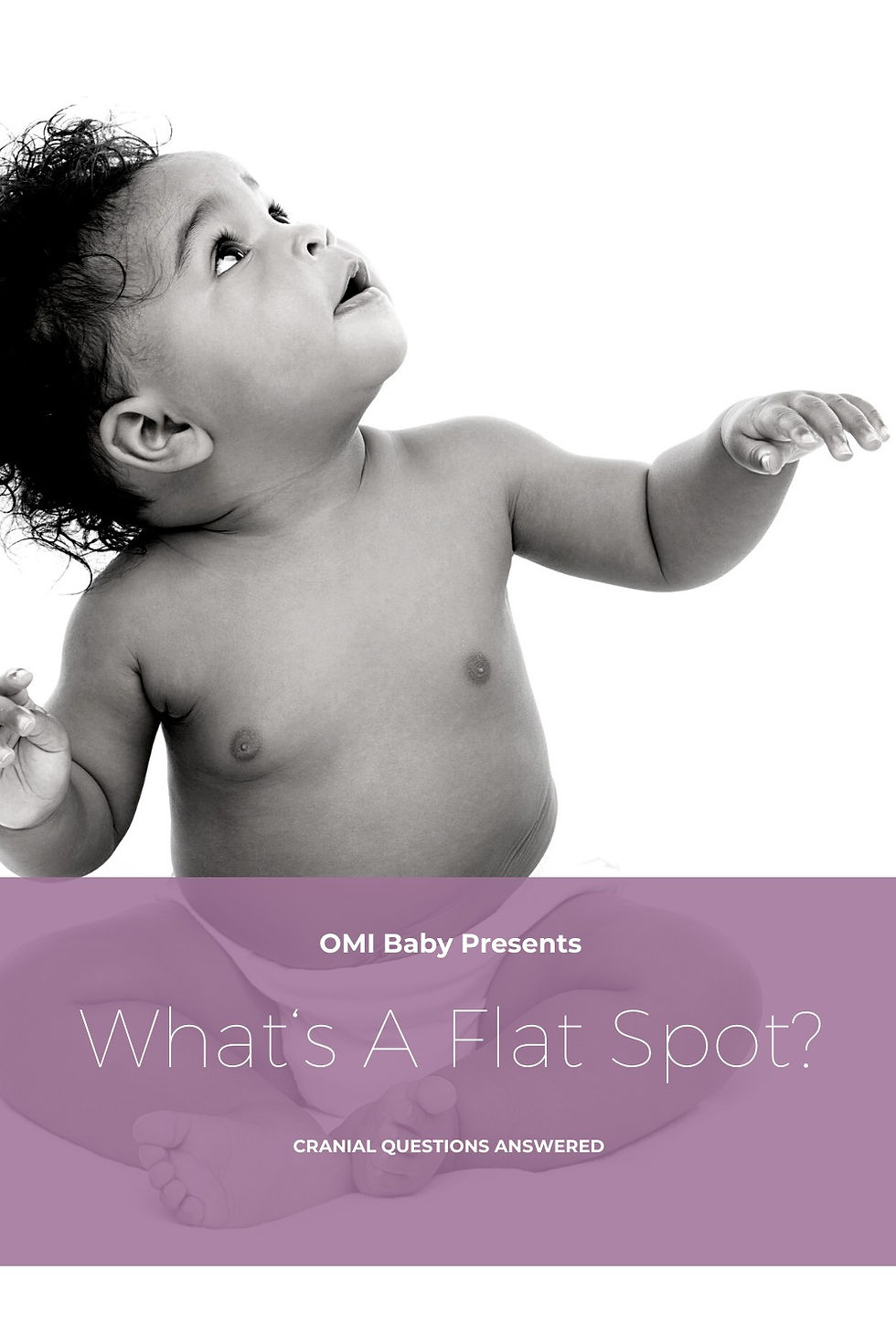A newborn baby has over 300 bones in their tiny bodies while adults only have 206! That is because many of these bones fuse as the baby grows rapidly over the first few years of life. A baby's head is made up of 6 separate cranial bones at birth to allow the baby to be easily compressed through pregnancy and the birthing process. Most babies come out with some sort of cranial asymmetry which is totally normal.

As your baby starts to get bigger, so does their brain. They are constantly learning and their brain grows rapidly over the first few months of life. While the brain is growing, the surrounding bones grow and move into place around the brain. If your baby prefers to lay on one spot, the brain continues to grow but pushes the bones out because they head cannot grow where the baby continues to lay agains a surface. Instead of the skull rounding out, it gets a "flat spot".
A baby's cranial bones are still not sutured in place over the first year of life. They can be shifted as the brain continues to grow. The helmet provides a mold for the head to grow into, unobstructed. It securely holds the areas of the head that have been pushed outward and allows space for the flat spot to grow.
"But is it my fault?"
Unless you intentionally caused your baby to have a flat spot than NO, a flat spot cannot be blamed on a parents negligence. Baby's are themselves culprits in their own head flattening. While we can attempt to reposition our babies and prescribe tummy time, sometimes a flat spot is inevitable due to circumstances including prenatal and postnatal factors.

Prenatal and Postnatal Factors
According to the Official Journal of the American Academy of Pediatrics, (2014), plagiocephaly increases dramatically in the first 7 weeks after birth and is primarily observed with right sided flattening. Further investigation found that parents are 4 times more likely to feed their baby in their left arm as opposed to right. They also found that parents lay their children with their head to the left when changing them 4 times as often as to the right. Positioning your baby this way stimulates right rotation of the head (because they want to look at you). This repetitive positioning can then become the preferred positioning. In my experience as a clinician, I find flat spots to be self perpetuating. Once present, it is easier to lay on the flattened side, then preferred to lay on, then ultimately more difficult to move away from.
Plagiocephaly at birth is positively associated with males and first-born children. This phenomenon is explained by males having a larger, more rapidly growing head circumference. It is also suggested that first born children are predisposed to prenatal head flattening because of the more tightened uterus of the mother.
Other factors associated with head flattening at 7 weeks of age include; specific nursing habits, side preference when asleep, infrequent tummy time, and motor development. Delayed motor development can effect time spent off/on the flat spot and can also contribute to muscle imbalances (such as torticollis) which can further complicate plagiocephaly. It should also be mentioned that in our experience, babies with severe reflux are more likely to have a left sided flattening from turning to protect their airway while reacting to esophageal discomfort.

Now that you know more about what the flat spot is, you can rest assured that the flat spot or "dent" (as it is sometimes lovingly referred to) it not hurting your baby. The cranial bones have not yet hardened and the brain is happy to keep growing. Repositioning off of the flat spot and encouraging tummy time when your baby is awake can prevent the flattening from getting worse and can allow for the head to correct without a cranial orthosis. This is the key intervention recommended during the first 3 months of life.
As we know at OMI, sometimes a helmet continues to be indicated. For more guidance on your cranial journey, see "When to Helmet? Is it too early or late for me?" and please leave comments or questions below.
Reference:
Vlimmeren, L. A. Van, et al. “Risk Factors for Deformational Plagiocephaly at Birth and at 7 Weeks of Age: A Prospective Cohort Study.” Pediatrics, vol. 119, no. 2, 2007, doi:10.1542/peds.2006-2012.

© 2020 omibaby.com an Orthopedic Motion Inc. company

コメント